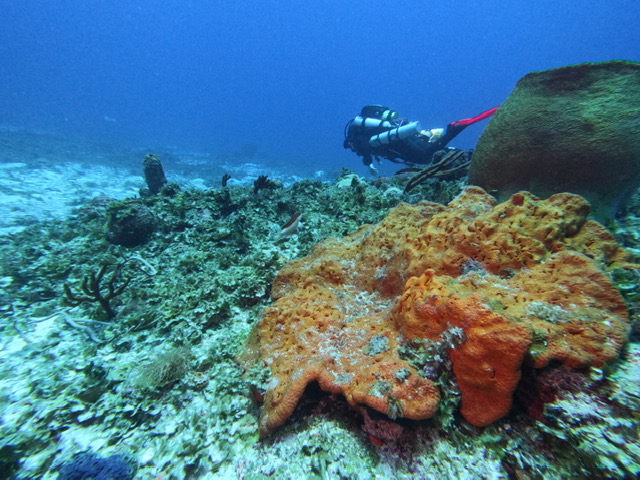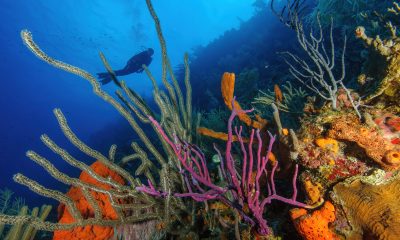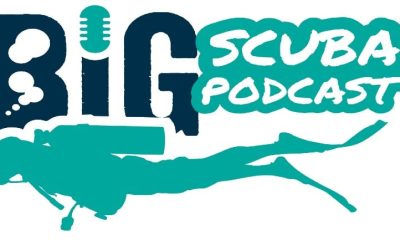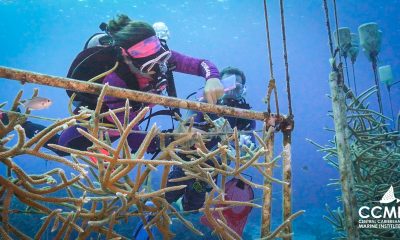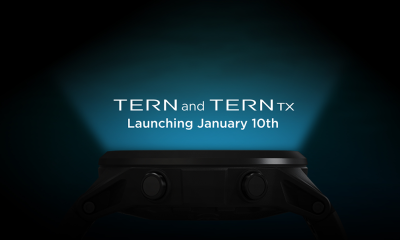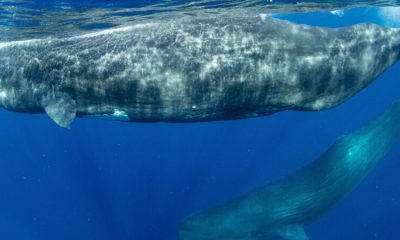Blogs
Halfway Through Expedition Hope: Do Offshore Seamounts Mean Good News for Cayman’s Coral Reefs?
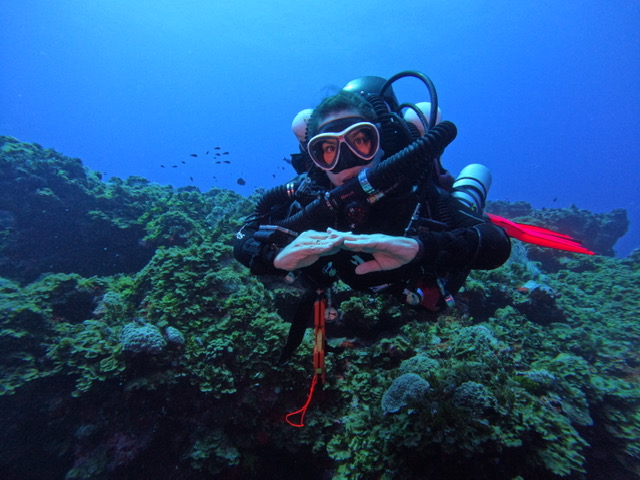
As we near the half-way point of the Central Caribbean Marine Institute’s (CCMI) Expedition Hope to characterise the biodiversity of two offshore seamounts in the Cayman Islands, CCMI would like to reflect on the exciting exploration and substantial achievements made through the project so far.
Funded by the UK Government’s Darwin Plus Programme, CCMI and project partners, the Cayman Islands Department of Environment, Guy Harvey Ocean Foundation, and Smithsonian Tropical Research Institute, have collected a wide range of data to describe the benthos and biodiversity of the previously unexplored seamount, 12-Mile Bank. This valuable information will support improved management of ecologically significant and poorly understood seamount habitats in Cayman, providing evidence into the Cayman Islands Government Biodiversity Action Plan.
In August 2023, 12 miles west of Grand Cayman at 12-Mile Bank, CCMI’s technical scientific divers, in collaboration with the University of Delaware, Harbour Branch Oceanographic Institute, and the Smithsonian Tropical Research Institute, explored uncharted waters and documented the biodiversity on the seamount up to depths of 50 meters.
During the research expedition, the team completed twice the initial number of proposed fish surveys and 20% more benthic photo-mosaics, in addition to collecting samples for eDNA and genetic connectivity assessments and producing a bathymetric map of 12-Mile Bank.
CCMI have also produced a three-part docuseries, Expedition Hope, that follows the team’s journey to explore and document these never-before-seen reefs, including the challenges they encountered and the hope these ecosystems may provide for coral reefs. This gripping tale of female-led ocean exploration premieres on CCMI’s YouTube channel at 12pm on Friday 15th December.
Part 1: https://youtu.be/aIxIgvvVr4E
Part 2: https://youtu.be/NjAFh9-mhpU
Part 3: https://youtu.be/mssrMIpFWqc
As shown in the Expedition Hope series, there is a reason these seamounts remain largely unexplored, as weather conditions are rarely conducive with research expeditions. The initial efforts to reach the second seamount, Pickle Bank, were curtailed by bad weather, but the team will not be deterred that easily. In spring/summer 2024, CCMI’s researchers and project partners will focus their efforts on characterising Pickle Bank, a seamount 45-miles offshore, north of Little Cayman.
Both Pickle Bank and 12-Mile Bank are classified as Vulnerable Marine Ecosystems under international criteria and are thought to be home to rich biodiversity with fewer impacts from human activity due to the remote location. The first expedition indicated that 12-Mile Bank seamount harbours productive environments with high levels of coral on the south, and larger numbers and sizes of fish on the north side.
Dr Gretchen Goodbody-Gringley, CCMI’s expedition leader, said:
‘With this docuseries, we’re not only showing you what we did to document the fish, coral and biodiversity that live on the seamounts, but you get a deep glimpse into the operations that go into expeditions like this. It’s not easy to go offshore and dive to 50 meters, and sometimes things don’t go as you expect. CCMI is thrilled to show viewers behind the scenes and how science happens in this exciting expedition to 12-Mile Bank.’
CCMI’s data analysis will provide even more insight into the details of these cryptic habitats, including estimates of biodiversity at the population scale using eDNA, and environmental information on the driving forces that influence the marine habitats and organisms.
This collaborative effort across international research and conservation organisations will produce open access data for future conservation action and data-driven decision-making and management of these seamounts.
Once these valuable ecosystems are more understood as a result of this project, they can be better protected and conserved to ensure their health for future generations. The data from this project will be incorporated into a new section of the Cayman Islands’ Government Biodiversity Action Plan and will be used to underpin discussions for future marine spatial planning legislation.
These unexplored and poorly understood seamount ecosystems could provide a glimmer of hope for the future of Cayman’s coral reefs, potentially providing refuge, larvae sources and resilience from the impacts of climate change. As such, it is essential that they are understood in order to be protected.
With Pickle Bank even further away from land and human impacts, CCMI are excited to explore this unknown ecosystem in spring 2024 and share the findings of these unique and unrevealed habitats with both local and international communities and scientists.
If you want to find out more about CCMI’s seamount exploration project, visit CCMI’s webpage here.
Blogs
Diving redefined at TDEX Bangkok 2024: NovoScuba and Siam Diving Enterprises join forces to bring diving education to the next level
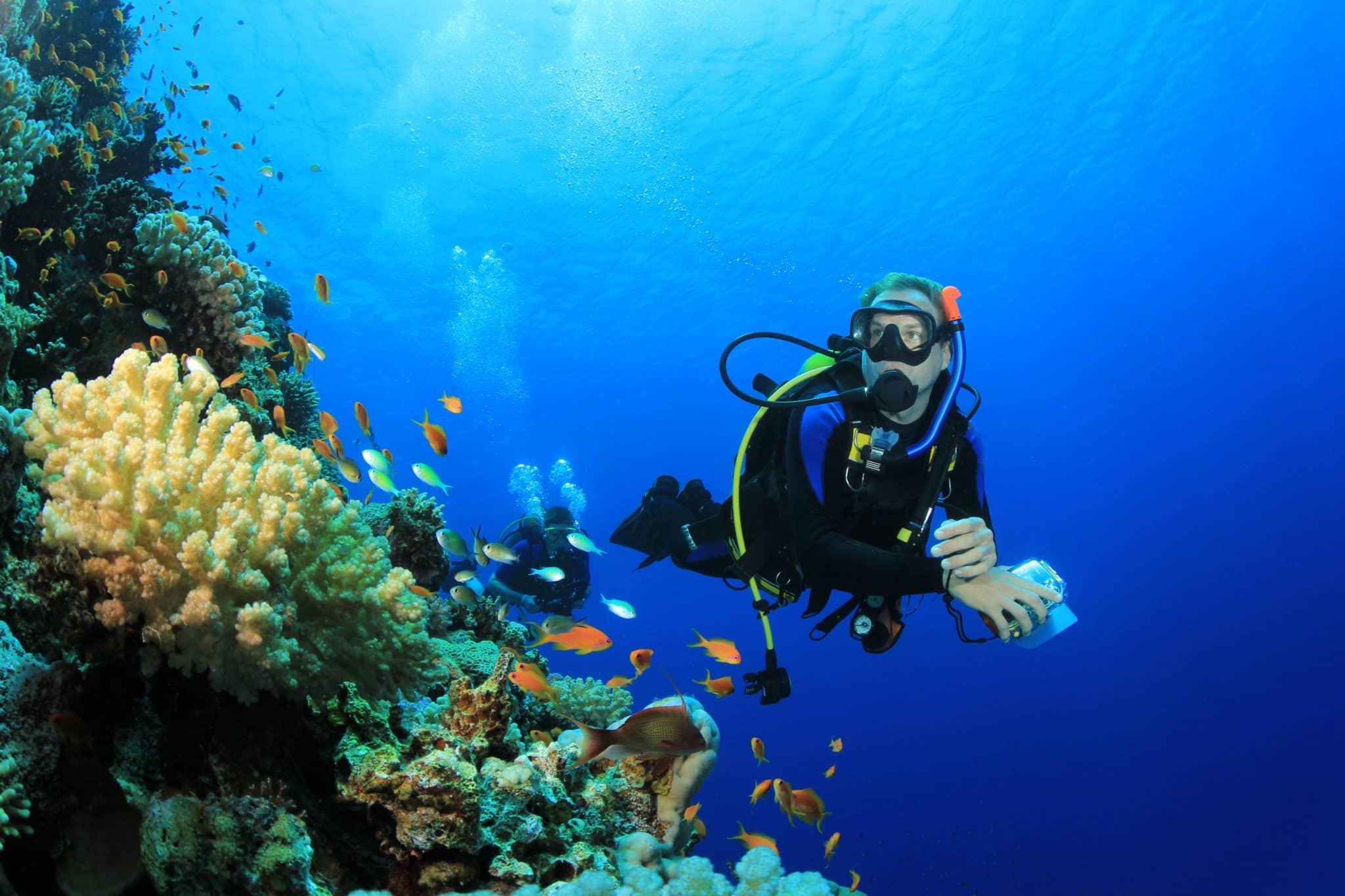
NovoScuba, a ground-breaking diving agency based in the UK, is preparing for the global debut of its innovative subscription-based training platform that is set to redefine the way diving education is provided. The much-anticipated launch will take place at TDEX Bangkok 2024, marking a significant milestone in NovoScuba’s journey to reshape industry standards.
As part of an important initiative, NovoScuba is pleased to announce a partnership with Siam
Diving Enterprises (SDE) and their renowned Ocean Store. SDE, as one of Thailand’s leading
suppliers of diving, freediving and snorkelling equipment, brings a wealth of expertise and
resources to this collaboration, furthering NovoScuba’s mission to elevate the diving experience for enthusiasts worldwide.
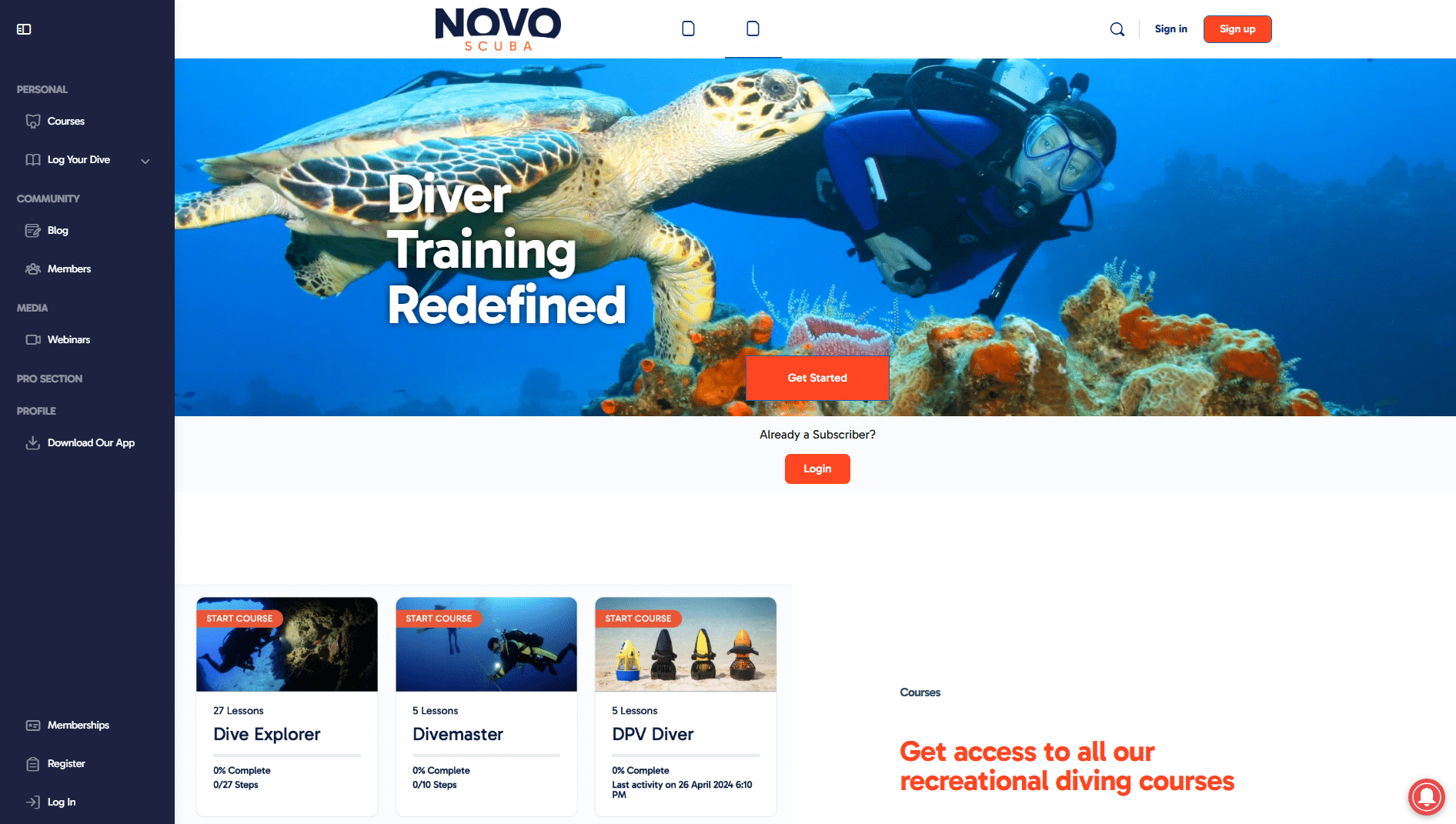
NovoScuba aims to revolutionise the way dive shop owners, dive professionals and dive
enthusiasts engage with diving, making it more accessible and profitable for the entire diving
industry.
 “NovoScuba is not just another certification agency; it’s a transformative force built on
“NovoScuba is not just another certification agency; it’s a transformative force built on
innovation and accessibility,” said Mark Spiers, founder and CEO of NovoScuba. “Our
partnership with Siam Diving Enterprises reflects our commitment to redefining diving education and empowering the diving industry at all levels.”
Siam Diving Enterprises, known for its extensive range of premium diving equipment from leading brands, will host NovoScuba at stand A74 during TDEX. This strategic collaboration offers divers a unique opportunity to experience first-hand NovoScuba’s groundbreaking approach to diving education.
NovoScuba’s platform offers state-of-the-art training programmes, including recreational and professional diving courses, designed to meet international standards and ISO certifications.
With a subscription-based model, digital learning materials available in 13 languages and
multi-platform accessibility, NovoScuba ensures that diving education is within reach for
everyone.
“We are inviting all dive enthusiasts, professionals and shop owners to join us on this
revolutionary journey,” added Mark Spiers. “Together we can redefine diving as we know it and
make a positive impact on the planet.”
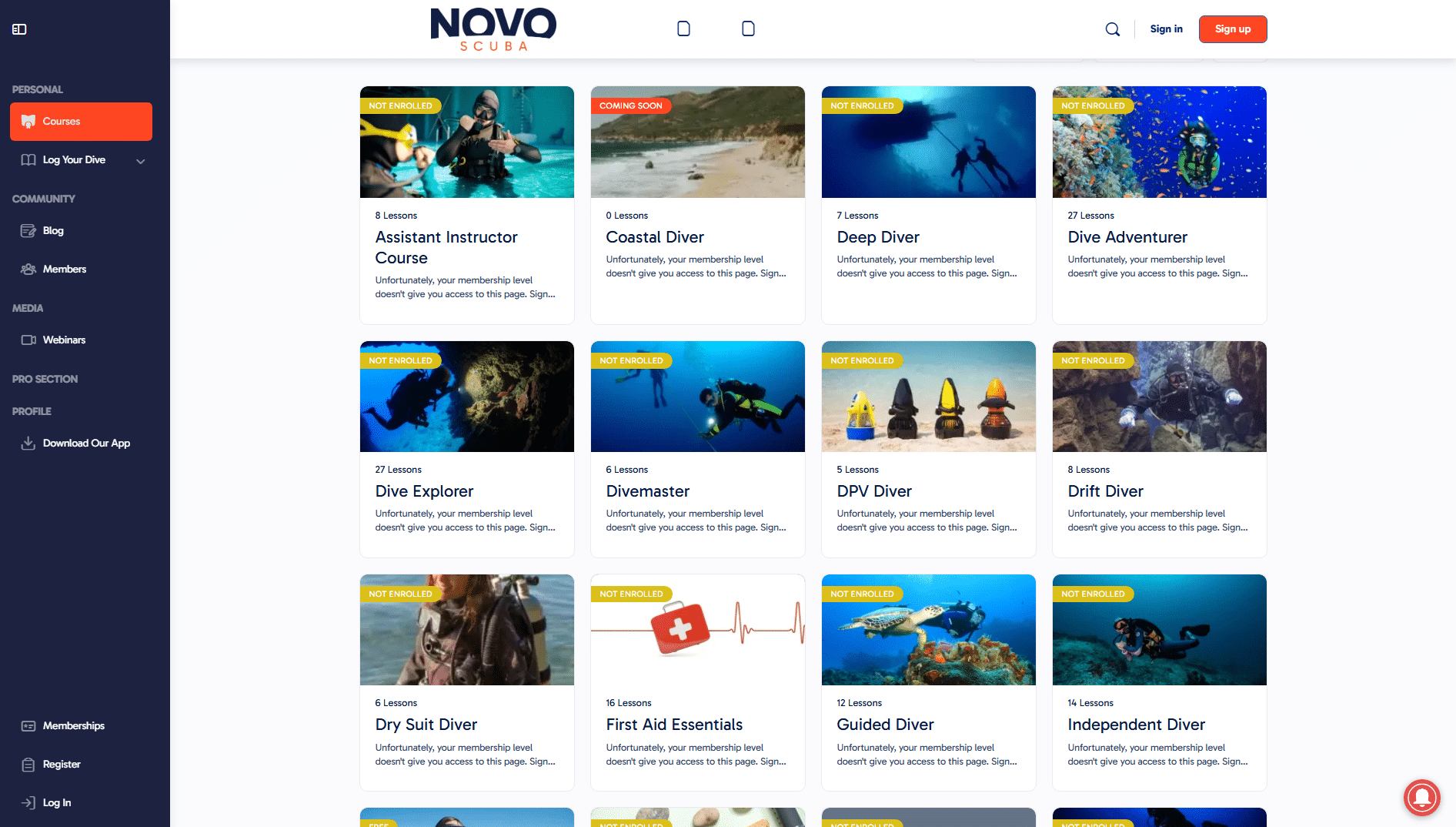
Visit Siam Diving Enterprises and NovoScuba at stand A74 during TDEX Bangkok 2024 to
explore the future of diving education and discover the latest innovations in diving equipment.
About NovoScuba: NovoScuba is a pioneering dive training agency committed to making
diving inclusive, accessible, and enjoyable for everyone. With a focus on innovation and
positive impact, NovoScuba offers state-of-the-art training programs, digital learning
materials, and a subscription-based platform designed to redefine the diving industry
worldwide. To learn more about NovoScuba’s innovations, go to www.novoscuba.com.
About Siam Diving Enterprises (SDE): Siam Diving Enterprises (SDE) is one of the
largest suppliers of scuba diving, freediving, and snorkelling equipment in Thailand. With
warehouses in Bangkok and a team of industry experts, SDE offers a comprehensive range
of premium products and exceptional customer service to diving enthusiasts across the
country. To learn more about SDE go to Ocean Store Thailand website.
Blogs
Wrecks’ Curse – The World of Wreck Diving
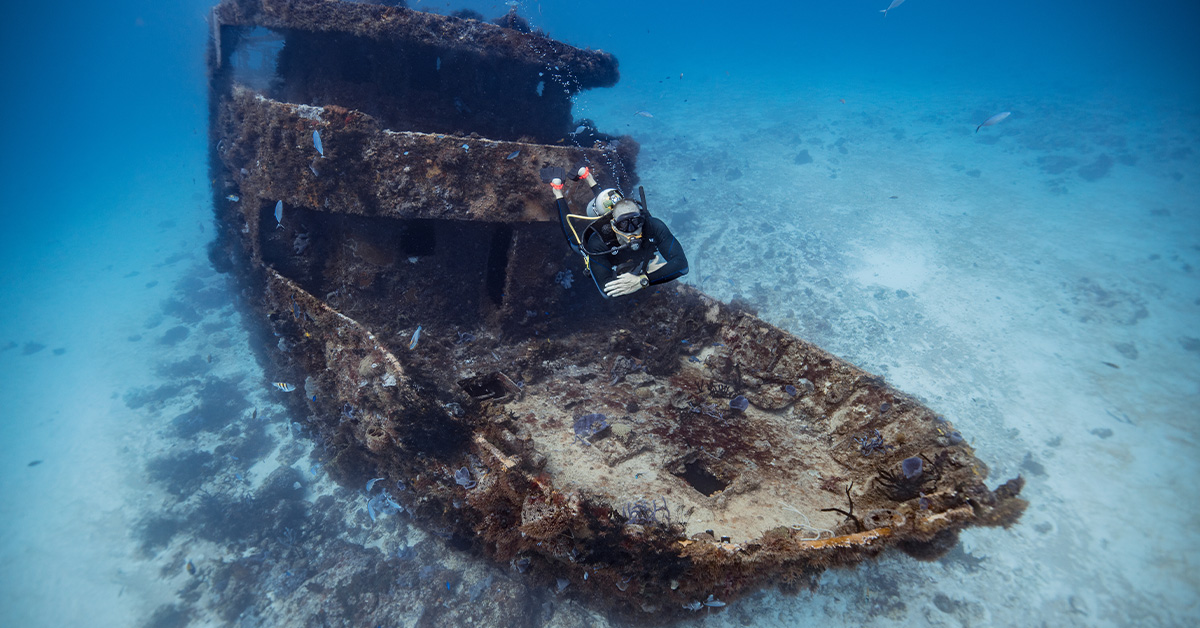
By Pablo Mir
We all enjoy those unexpected encounters that come with wreck diving, no matter how small, during our open water scuba dives. Exploring those nearly vanished remains of a ship scattered across the ocean floor is frequently the climax of the otherwise regular dive.
What is Wreck Diving?
Wreck diving involves exploring underwater shipwrecks while scuba diving. Sometimes, the wreck we encounter is more than just the remnants of a small and forgotten old vessel. Or perhaps we didn’t deliberately choose it, but the charter we boarded had that destination planned that day. The Benwood, less than 14 meters or 45 feet deep, in the clear waters of the National Marine Sanctuary in Key Largo, Florida, or the Copenhagen of Fort Lauderdale, also Florida, are good examples. Divers, many beginners who haven’t even devoted half a second to thinking about wreck diving, enjoy exploring their remains and the fauna that inhabit them. In some way, and at different levels, we all seem to potentially be wreck divers, even without a higher and explicit intention.
First Encounters: The Unplanned Dive into Wreck Exploration
But the trek is long and has many branches. Wrecks present themselves in vast possibilities, from shallow and clear waters to deep and dark ones. The Ancient Mariner, Captain Dan, U352, Great Isaac, Grecian, Lady Luck, Hyde, Aeolus, Hydro Atlantic, RBJ & CC, Algol, U869, and the Andrea Doria -the Grand Dame of the Sea- are some of the names that resonate among thousands in the minds of many wreck divers on the East Coast of the USA. For many of us, getting ready to traverse that path of increasing challenges, increasingly demanding environments, and more astonishing, transcendent dives is a life goal in terms of recreation.
A Diverse World: The Spectrum of Wreck Diving Experiences
Now, it is well known that the label of wreck diving is not only applied to shipwrecks. It is common to extend it to any artificial structure or piece of it that can be explored during our dives. For example, Texas Tower #4, an Air Force radar station off the coast of New Jersey, toppled in 1961 by a storm, is frequently visited by numerous local technical divers and visitors who want to test their skills in those demanding waters. Similar structures of different natures and purposes exist in many other places, with the most different levels of certification and experience requirements we can imagine.
Is Wreck Diving Dangerous?
Wreck diving is not inherently dangerous, but proper training is required. Describing with words the feeling of wonder and the adventure involved in wreck diving is not easy. In the same way that regular open water diving is the entry point to another world, a unique, fascinating world, wreck diving is also an entry point to one of the additional levels of enjoyment and fascination the world of recreational diving poses. Wreck diving, we live the adventures others just dream or fear. We are there, explorers of a distant land. Often, we witness the remains of real human tragedies; other times, we are visitors to the most wonderful amusement park we can imagine.
Learning Curve: The Path from Novice to Experienced Wreck Diver
Sometimes, watching groups of recreational divers exploring a wreck might seem like witnessing a scene from a pirate movie. Two or three divers here, two or three more there, ascending and descending along its sides, from bow to stern, sticking their heads in to look inside compartments and passages. In some cases, entering and exiting the bridge or any space allows penetration in areas with abundant natural light and generous access points. Their expressions and body language make it easy to notice that they are having a great time. There is no doubt they are enjoying it, and it will be an experience they will vividly remember.
If they are a group traveling together, an instructor or divemaster may be there to ensure everything goes well. The passion for exploration, for discovery, and that thirst for adventures we all have within us can sometimes hinder us in making our best decisions. Therefore, to become actual wreck divers, we must not only desire to do so but also have the will to learn and gain experience, slowly and safely, in everything this specialty implies. While it is true that exploring the exterior of a wreck may seem like something that doesn’t require specific training, the reality is that it does. Fishing lines, sharp surfaces, parts that can easily come off, suddenly disappearing visibility, disorientation, etc., are dangers we must have learned about, developed strategies to avoid, and implemented procedures to solve with the proper tools.
And so it will be; many will traverse the paths of wreck diving by starting with proper training. Sometimes, the first step is part of the regular advanced diver certification many divers take; other times, it is going straight for a wreck diving specialty. They will learn and start practicing, gaining experience and ease in their procedures. They will fall more and more in love with those twisted iron environments and proudly display the rust stains on their diving suits as if they were scars from a well-fought battle.
Deepening the Dive: Advanced Wreck Exploration Techniques
But the journey continues. Sooner or later, some will want more than just hovering around the wrecks. Crossing well-lit passages with the exit in sight will no longer be enough for them. What they recently may have told themselves they wouldn’t do will begin to intrigue them, and they will want to continue training “just in case.” They will want to start moving away from those open corridors and see with their own eyes what lies beyond. They will no longer see wrecks as enemies to overwhelm in large groups but as a mystery to unravel slowly, passage by passage, room by room. They will split into small groups. They pursue a specific goal, have a specific plan, and seek to minimize unexpected situations, and this is more controllable and achievable when done by two or three rather than four or five.
They will keep learning, venture through narrow passages, dodge cables and pieces of metal hanging from what is now the ceiling, and proceed cautiously to avoid stirring up sediments. They will use different methods to establish positions at crossroads, place strobe lights, carry multiple penetration reels, and carry substantial knives, the kind they used to laugh at not long ago, thinking they were unnecessary exaggerations.
The Wreck Diver’s Journey: A Path of Endless Discovery
Over time, they will penetrate deeper and deeper into larger, darker, gloomier, more frightening wreck structures, simply because they can. They will descend to greater depths because that’s where they are in better condition and farther away from the boarding hordes.
They will transition from Air to Nitrox, later return to Air, and later delve into the world of Trimix. They will start planning and executing dives with decompression stops, as otherwise, their bottom times will be insufficient for their intentions. From one decompression gas cylinder, they will move to two, and in some cases, three or more. Those who can afford it will buy rebreathers; those who can’t will stick to open circuit, carrying multiple large cylinders.
The Eternal Call of the Deep
But genuine amazement will hit them hard on the day they, thinking carefully about all the steps they have taken and accounting for the time and effort dedicated, conclude without a shadow of a doubt that it was worth it. It will be too late for them; they will have fallen victim to this curse of shipwrecks that has trapped so many. There will be no escape for them; from now on, they will be wreck divers without cure or remedy. They will be condemned to spend the rest of their vacations and days off among twisted irons at the bottom of rivers, lakes, and oceans. Cheers buddies! And a warm welcome to all those newcomers to recreational diving who, unknowingly, may be destined to wander among old wood and rusted metal, seeking to put out that thirst for real-life adventures.
To find out more about International Training, visit www.tdisdi.com.
Main Image: William Drumm/International Training
-

 Gear Reviews1 month ago
Gear Reviews1 month agoGEAR REVIEW – Revolutionising Diving Comfort: The Sharkskin T2 Chillproof Suit
-

 Blogs2 months ago
Blogs2 months agoMurex Resorts: Passport to Paradise!
-

 Blogs3 weeks ago
Blogs3 weeks agoDive Indonesia Part 3: Dive into Lembeh Trip Report
-

 Blogs3 months ago
Blogs3 months agoDiver Discovering Whale Skeletons Beneath Ice Judged World’s Best Underwater Photograph
-

 News3 months ago
News3 months agoPADI Teams Up with Wellness Brand Neuro to Drive Ocean Change and Create a Blue State of Mind
-

 Marine Life & Conservation3 months ago
Marine Life & Conservation3 months agoSave the Manatee Club launches brand new webcams at Silver Springs State Park, Florida
-

 Blogs2 months ago
Blogs2 months agoSeagrass Awareness Month brings critical food source for Manatees to centre stage
-
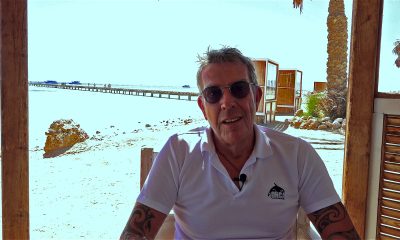
 Blogs2 months ago
Blogs2 months agoSOMABAY: Scubaverse interviews Wolfgang Clausen, General Manager, ORCA Dive Clubs


